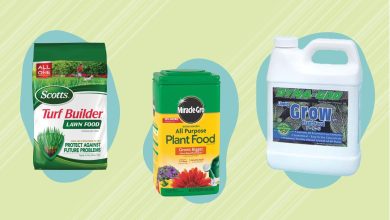How to Plant Bamboo: Guide that includes [17 Steps + Images]
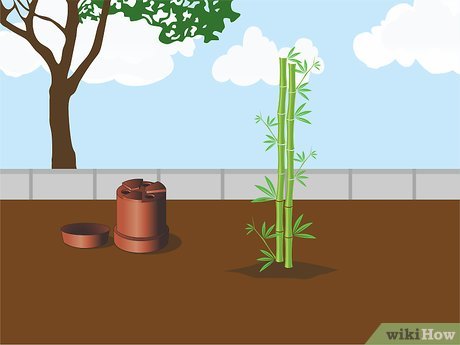
It is said of bamboo that it isthe patient tree
Why? You plant the seeds and years go by without growing or germinating. You think seeding just hasn’t worked.
But suddenly, at 7-8 years old, the bamboo explodes. It begins to grow and becomes one of thefastest growing trees.
In a few months it reaches an enormous height. For this, bamboo has been preparing for years.
Torpid.
He has been patient.
If you want to learn how to plant bamboo, I think you’ve come to the right place.Really.
Important points for Planting Bamboo:
- When? during the spring.

- Where? Sunny place. It needs at least 8 hours of light daily.
- Growing time? It depends a lot on the variety, but between 7-10 years.
- How do we prepare the land? They prefer loamy, well-drained soils. Loamy soil is a soil made up of clay, silt, and sand.
- How do we water? It is capable of absorbing a lot of water, so it does not need too much watering except in the early stages.
- How do we sow? Here step by step.
- Favorable associations? Legumes, such as peas, broad beans or beans because they help their natural fertilization.
- Plagues and diseases? Mealybugs, white spider, mites, rust.
Bamboo, in addition to being used to transport water and as a building material, can also be used as an ornamental plant.
In recent years bamboo has becomeVery popular for decorating spaces.
It is a tree of the grass family and it is estimated that there are more than 1,000 species around the world, with 50% of them belonging to the American continent.
They canreach up to 25 m in height and 30 cm in diameter.
There are herbaceous and woody, tussock and climbers. In addition, they are able to adapt to different types of soil and habitat.
In this article we will know how to plant bamboo successfully.
What do we need to plant bamboo?
When? The dates
We want to plant bambooduring spring.
In very cold areas, you should try to plant the bamboo before the arrival of autumn, since the plant needs time to harden before the frost begins.
In very hot areas, with temperatures above 38ºC, bamboo should be planted in late spring or autumn, to avoid the intense heat of summer.
Where? The temperature and the light
Most varieties of bamboo prefer tropical climates, but there are some varieties that are more resistant to cold or heat.
In terms of light, the vast majority of bamboo cropsneed good exposure to sunlightso that they can develop properly.
Make sure that the place where you want to plant bamboo receives at least 8 hours of sun per day.
Some tropical species may require shade during high temperatures.
How do we water? Humidity
Bamboo needs constant watering, but its roots are very sensitive to stagnant water.
In addition, bamboo is capable of absorbing high amounts of water, soIt should not be watered excessively.
In temperate, dry climates, bamboo seeds and early shoots should be watered daily.
When the bamboo has matured, it is enough to water once a week if the weather is mild, and every third day if the weather is hot and windy.
How do we prepare the land? the substrate
Bamboo adapts to a wide variety of soils, as long as they have good drainage, as they are very sensitive to standing water.
 Also avoid stony or grassy soils, as well as those that are relatively impermeable.
Also avoid stony or grassy soils, as well as those that are relatively impermeable.
However, they prefer loamy, well-drained soils. Loamy soil is a soil made up of clay, silt, and sand that contains copious amounts of decaying plant matter (humus).
The adequate pH for its development ranges between 5.5 and 6.5.
Add lime to the soil if the pH level is less than ideal. Otherwise, if it exceeds the pH levels, mix the soil with peat moss.
Grass clippings make one of the best organic mulches for bamboo, helping to keep bamboo growth in check and can protect it from potential threats. In addition, they are rich in nitrogen and silica.
Compost and hay work too.
If you use fertilizers, one with a high level of nitrogen is preferable. Apply the fertilizer once in early spring and once in the summer.
How to plant Bamboo step by step [17 Steps]
There are two main methods of planting bamboo, by seed (in the seedbed or directly in the ground) or by cuttings. The process is generally very similar:
 1) It cleans the land, extracting weeds and all kinds of residues.
1) It cleans the land, extracting weeds and all kinds of residues.
Later, water the soil so that it remains moist and facilitates the sowing of the seed.
 two) Bamboo seeds have to be cleaned and left to dry in the sun for a couple of hours.
two) Bamboo seeds have to be cleaned and left to dry in the sun for a couple of hours.
Subsequently, you must soak them in clean water for a period of 6 to 12 hours.
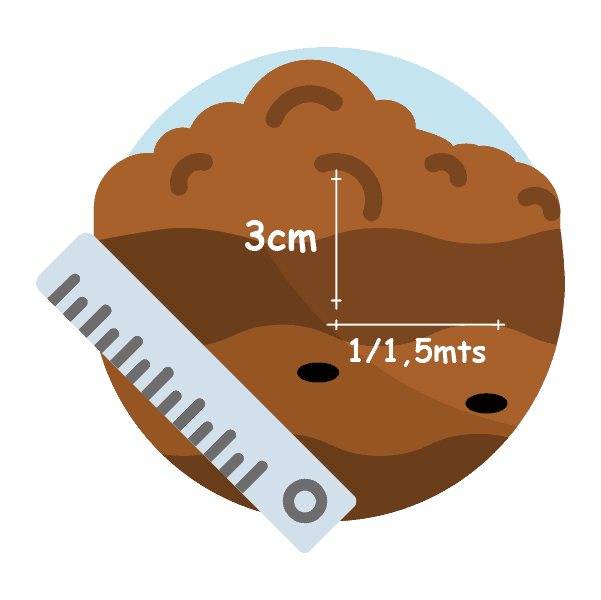 3) Place the seeds at a maximum depth of 3 cm and cover them with a light layer of mulch and soil.
3) Place the seeds at a maximum depth of 3 cm and cover them with a light layer of mulch and soil.
If you plant several bamboos, make sure to leave a distance of between 1 and 1.5 meters between each one.
 4) Keep the ground moist, preventing puddles from forming.
4) Keep the ground moist, preventing puddles from forming.
Bamboo seeds normally germinate between 10 and 25 days.
 5) If you prefer, you can plant bamboo in seedbeds.
5) If you prefer, you can plant bamboo in seedbeds.
Fill them with a mixture of 8 parts topsoil, 1 part ash, and 1 part pine shavings or rice hulls. Make sure the soil is loose and does not contain stones or lumps.
 6)Follow steps 2, 3 and 4.
6)Follow steps 2, 3 and 4.
Remember that bamboo takes time to start growing, but when it does, its explosion is impressive. It grows really fast. You have to be patient for a while.
 7) Preferably, place the seedbed in a partially shaded spot.
7) Preferably, place the seedbed in a partially shaded spot.
In the beginning, many hours of sunlight can dry out the soil and it is essential that the bamboo is continuously moist.
 8) When the first shoots appear, reduce the amount of watering to once a week in temperate climates or every other day if the weather is hot and windy.
8) When the first shoots appear, reduce the amount of watering to once a week in temperate climates or every other day if the weather is hot and windy.
If you plant bamboo through cuttings, it is best that they come from a plant that is less than 3 years old.
It is also advisable to use the upper middle part of the stem, where two full nodes and half of a third appear. Check that these knots are not damaged.
 9) Apply a little damp clay to the cut edge of the bamboo, but do not completely cover the hole.
9) Apply a little damp clay to the cut edge of the bamboo, but do not completely cover the hole.
This clay will work as a disinfectant.
 10)You should immediately plant it vertically, leaving the internode out of the ground.
10)You should immediately plant it vertically, leaving the internode out of the ground. eleven) If you have planted in a nursery, the bamboo will be ready to be transplanted after 4 months, when they reach between 40 and 60 cm in height.
eleven) If you have planted in a nursery, the bamboo will be ready to be transplanted after 4 months, when they reach between 40 and 60 cm in height.
You can transplant it into a permanent pot or directly into the ground, depending on your preference.
 12) Keep in mind that most bamboo species require time to strengthen their root system and stem, which is why we must wait so long.
12) Keep in mind that most bamboo species require time to strengthen their root system and stem, which is why we must wait so long.
If you transplant on land, try to leave a distance of 1 to 1.5 meters between each bamboo.
 13) The hole you transplant the bamboo into should be about twice as wide as the root mass of the bamboo.
13) The hole you transplant the bamboo into should be about twice as wide as the root mass of the bamboo.
Remember to hydrate the soil well and fertilize it with organic matter when transplanting.
 14) Protect the bamboo from the wind.
14) Protect the bamboo from the wind.
Bamboo’s root system is shallow, plus it grows very tall and very quickly.
As a consequence, it can be easily damaged by strong winds. You will need a barrier to prevent this from happening.
The easiest way to protect it is to place it just behind the trees in your garden.
You can also build a fence around the area.
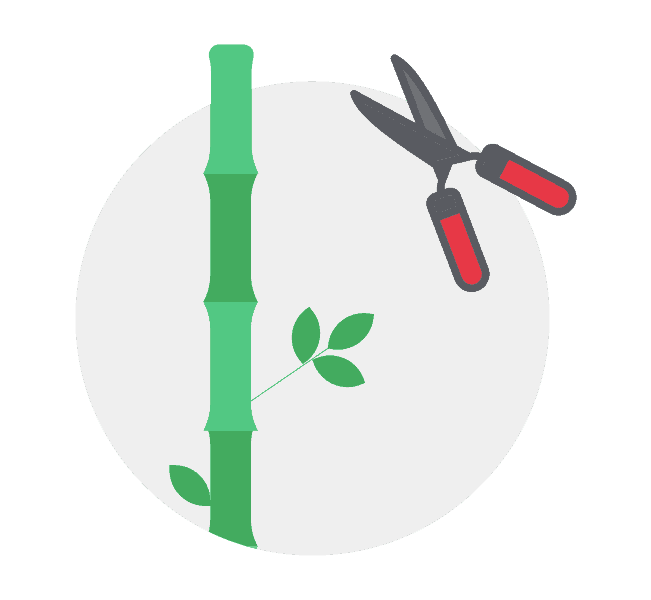 fifteen) Prune bamboo as needed.
fifteen) Prune bamboo as needed.
You will probably need to cut it down to prevent the canes from clumping together and cutting off the nutrient supply.
Remove old and battered bamboo branches once a year. Make the cut just above the nodule, so it can grow back.
 16) Try never to remove the leaves that are closest to the root, as these help keep them protected and moist and are essential for replenishing the nutrients in the soil that help promote development.
16) Try never to remove the leaves that are closest to the root, as these help keep them protected and moist and are essential for replenishing the nutrients in the soil that help promote development. 17)Finally, it protects the bamboo against pests and diseases.
17)Finally, it protects the bamboo against pests and diseases.
Bamboo is resistant to most pests and diseases, so you only need to apply a pesticide or fungicide if a problem develops.
To know more, you can see: Bamboo cuttings.
harvest and gathering
 Fresh bamboo shoots can be used as food. You can collect the young shoots during the first few months.
Fresh bamboo shoots can be used as food. You can collect the young shoots during the first few months.
Bamboo is best fresh, but you can also can it or freeze it for long-term storage.
It is a good source of fiber and other nutritional benefits.
Common pests and diseases
To learn more about bamboo pests and diseases, see this article.
Some species of bamboo can be victims of mealybugs, red spider mite and rust.
However, because mature bamboo is quite hardy, mites are only a problem for new shoots.
Mealybugs
If the incidence is severe, mineral oil spraying with insecticides compatible with the auxiliary fauna should be carried out.
For the biological control of this pest, natural predators such as Rodolia cardinalis or Cryptolaemus montrouzieri are used.
Likewise, potassium soap can be applied to the underside of the plants and neem extract, which will act as an insecticide.
Red spider
It can be wetted at night by sprinkling to maintain humidity.
To combat it, an extract of garlic and chili can be applied, although if the plant is very affected, it is best to eliminate it to prevent it from spreading to other plants.
white spider
 To combat an infestation, an extract of garlic and chili can be applied, although if the plant is very affected, it is best to eliminate it to prevent it from spreading to the others.
To combat an infestation, an extract of garlic and chili can be applied, although if the plant is very affected, it is best to eliminate it to prevent it from spreading to the others.
If the problem persists, it is important to consult an expert to apply an effective acaricide.
Mites
To prevent its appearance, it is recommended to keep the crops clean of weeds and remains of previous crops. Another effective form of prevention is crop rotation.
Biological control can be done through its natural enemies. The main predatory species of eggs, larvae and adults such as the Feltiella acarisuga mosquito.
Rust
It attacks the aerial part of the plant, mainly the leaves and stems, where powdery masses with a rusty appearance appear.
The recommended treatment is based on fungicides.
Where can I buy bamboo seeds or trees?
As always, if you have the possibility of accessing a nursery near your town, it is the option that we recommend.
This is because you will probably be able to see the plants with your own eyes and also be advised by a professional about their care, planting or transplanting.
In any case, we can also recommend that youpurchase the seeds or plants on Amazon.Here we show you some options:
 free shipping 200pcs giant bamboo seeds… €4.99 View on Amazon Prices with VAT without transport
free shipping 200pcs giant bamboo seeds… €4.99 View on Amazon Prices with VAT without transport  50pcs/Seeds Bamboo Tree Seeds… View on Amazon Prices with VAT without transport
50pcs/Seeds Bamboo Tree Seeds… View on Amazon Prices with VAT without transport  free shipping 200pcs giant bamboo seeds… €4.99 View on Amazon Prices with VAT without transport
free shipping 200pcs giant bamboo seeds… €4.99 View on Amazon Prices with VAT without transport
Last updated on 08-01-2022 / Affiliate Links / Affiliate API Images
How long does bamboo live?
Normally, the lifespan of bamboo is between 8 and 10 years, but currently there are known plants that accumulate about 30 years.
How long does bamboo take to grow?
It grows very quickly. In fact, it is said to be the fastest growing plant in the world. At 5 years old, they are already adult specimens.
How long does it take to produce fruit?
It exceeds 10 years of life to achieve fruit production.
Can it be grown in a pot?
Yes, it can be grown in a pot. In fact, it is one of the favorite plant species to have indoors.
How many times does bamboo produce fruit?
It is not a plant that is characterized by producing many fruits.
By producing fruits every certain season, each specimen could do so 2 to 3 times in its entire life.
Should bamboo be pollinated to obtain fruit?
Pollination is with the presence of insects and must be done crosswise with female and male specimens.
How cold can bamboo tolerate?
It does tolerate cold and even frost. It can live without problems in environments where winters are around -10° C.
How many bamboos can be planted per hectare?
It is possible to work with a rate of 400 vines per hectare.
What kind of fertilizer does bamboo need?
It is advisable to work with NPK fertilizers that are enriched with trace elements and provide them in spring and summer.
How much heat and/or drought can bamboo tolerate?
It does not work well in very hot environments. It is better that the maximum at which it is is 26 ° C.
It all depends on the type of bamboo in question. There are some that tolerate drought and others that lose their leaves if they don’t receive moisture.
We hope that you can plant bamboo in your garden or at home. Do not forget that if you have any questions you can leave us a comment below

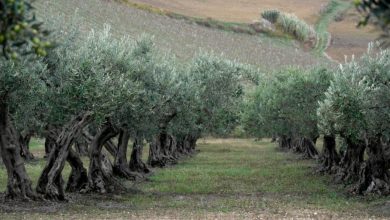
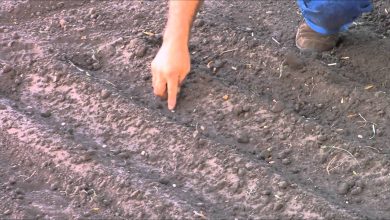
![Photo of Yellow Flowers: [Species, Care, Characteristics and Meaning]](https://www.complete-gardening.com/wp-content/uploads/2022/08/yellow-flowers-species-care-characteristics-and-meaning-390x220.jpg)
